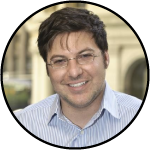In the world of commerce, products are core to a company. Companies in this sphere exist because they sell products to consumers and businesses that find value in those products. Until these products stop adding value, (or until someone in the sourcing department decides to stop paying the bill), this cycle of creation and consumption will continue ad infinitum. And depending on the industry, the competition is fierce and competitors are popping up daily trying to convince your customers to switch from you to them because they may offer a product that is less expensive, more valuable, or easier to work with.
But brand loyalty only goes so far. If your product declines in quality, fewer people will want to buy it because low-quality products don’t work well and people have a low tolerance for defective products. Once people give up on your product, they will go elsewhere. It’s that simple.
You see, brand loyalty is earned. It’s earned through consistently delivering high-quality products that add value. It’s earned when your product makes a customer think, “I can really count on [product X] because it’s reliable and always works great.”
I’m not talking about one-hit product line wonders like the Blackberry. People used to call those devices “Crackberries.” Instead, I’m talking about products that add value over time, companies that successfully execute the product development cycle over and over again. Like Apple with the iPhone, Mac, iPad, and iTunes, or Nike with Air Jordan sneakers. Success here has translated into amazing, high-quality products and experiences over and over again. People wait in line for hours just to get the latest product. The loyalty is almost cultish in nature. That’s when you know it works.
And it can work for you — with a new way of thinking about product development called the R5 Method.
I know this because I’ve lived it. Over the course of my 20+ years in business, I have had the opportunity to create, innovate and collaborate on products that drive world economies. Products on which people are most dependent. Products that drive commerce and are the backbone in the movement of money.
I’ve been hands-on from designing, to writing code, to setting up and leading global teams from 2 people to thousands of people. At Kettering University in Michigan, I created a learning system for mechanical engineers that cut down the time to learn computer aided design (CAD) software by more than 50%. In Huntsville, Alabama at Marshall Space Flight Center, I helped NASA engineers design and prototype next generation space orbitals. In Silicon Valley at IBM’s Global Technology Center, I was responsible for helping Intel, HP, Cisco, and Apple, optimize software development, through establishing rigor in the management of source code and defect reduction through test automation. As an entrepreneur, in San Francisco, I was a pioneer in mobile payments and digital commerce through GoPago, a company funded by JP Morgan, where my team and I were the first to create the ability to order and pay on the smartphone and skip the line at businesses like Starbucks. I advised and enabled some of the most admired companies, such as Google, Amazon, MLB, NBA, and the NFL on best practices in local commerce and mobile payments, subsequently, selling the company to Amazon. Currently, I lead product development and digital transformation at the biggest company you’ve likely never heard of called Fiserv; a 50k person, $100B financial technology company that creates software that powers governments, such as the United States of America, banks, such as Bank of America, Wells Fargo, Citibank, enterprises such as, Microsoft, Walmart and Target and main street businesses across America such as, my local hotspot, Balboa Cafe on Fillmore St. in San Francisco.
These experiences have led me to recognize iteration works best when you’re conscious about the way you do it. Put differently, I’ve learned that product development develops better products when you do it a certain way.
I’ve developed that certain way — my own special sauce for winning at product development. This site will be the open source destination where I will share the methodology. It has provided a framework to companies that are looking to build and rebuild their product development organizations and measure team productivity. In addition, I’ll share why it’s important to be detail oriented (my maniacal attention to detail stems from my parents) and the missteps that can expose and limit the success of a business – all of which, hopefully, can help you with your own journey.
All told, I’ll share my experiences and insights with you; my proprietary perspective on product development that is effective, efficient, and excellent for the bottom line. While this content is more focused on software product development, many of the same concepts and principles apply to developing any type of product.
So, stay tuned for more content coming soon. In the mean time, browse around and feel free to join our community; and as they say in the movies, the best is yet to come!
-Leo



